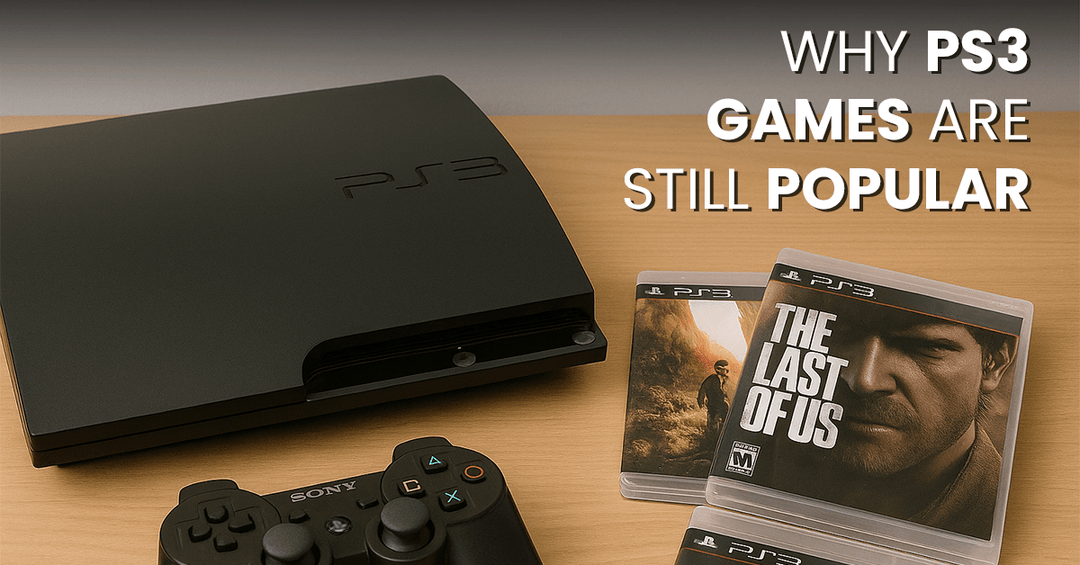Remember that feeling? The slightly chunky, gray plastic brick with the faint green glow of a screen—and the satisfying click of the power switch, followed by a familiar "ping!" as the Nintendo logo faded in.
For millions of us, the Game Boy wasn’t just a console; it was a portal to the entire world, all powered by four AA batteries.
Here, we’ll review the Game Boy evolution, actually, the story about brilliant design philosophy, gutsy business decisions, and the unforgettable moments that turned a simple toy into an enduring legend.
Keep reading!
A Controversial Beginning: The Birth of the Game Boy
The Game Boy's story doesn’t start with a clean drawing board; it begins with a fierce rivalry inside Nintendo itself.
One team, R&D2, had just launched a smash hit with the NES, which put a ton of pressure on their rivals at R&D1, led by the legendary Gunpei Yokoi, the creative genius behind the wildly successful Game & Watch series.
Yokoi knew his next project had to be a game-changer.
His vision was built on a design philosophy he called "Lateral Thinking with Withered Technology."
Don't let the name sound too serious—it was a simple, brilliant idea: use older, time-tested technology in new, clever ways, rather than trying to build with the latest, most expensive stuff.
He wanted something affordable and, most importantly, something with battery life that wouldn't drain your wallet in a single afternoon.
This put him at odds with his own team. His assistant director, Satoru Okada, pushed for a powerful, portable version of the NES.
The debates were heated. But Yokoi held firm, arguing that a full-color, power-hungry machine would fail in the marketplace. And he was absolutely right.
While competitors like the Sega Game Gear and Atari Lynx wowed with full-color screens, they were also notorious for chewing through six AA batteries in just a few hours.
The Original DMG-01 — Why a Monochrome Screen Was a Masterstroke
When the first Game Boy, model DMG-01, launched in 1989, its screen was, to be blunt, pretty rough.
-
It was a faint, washed-out pea-soup green
-
Had terrible motion blur
-
Came with a contrast knob you'd constantly be fiddling with
Internally, some at Nintendo even mockingly nicknamed the project "DameGame," which means "hopeless game" in Japanese.
But Yokoi persisted. He secretly continued development, finding a better screen (a super-twisted nematic or STN display) and ultimately convincing Nintendo’s president, Hiroshi Yamauchi, to greenlight the project.
The result was a console that wasn't just a gimmick; it was a truly portable, durable gaming machine, built like a tank.
The Game Boy evolution was also driven by its software.
At launch in North America, it came bundled not with a Mario game, but with Tetris.
The decision was a stroke of genius. How?
-
While Super Mario Land appealed to the core gaming crowd, the simple, addictive puzzle gameplay of Tetris was universally appealing.
-
It turned non-gamers into gamers and made the Game Boy an essential travel companion for everyone from kids to businesspeople.
The system's early library cemented its legacy. Top Game Boy titles included Super Mario Land, Kirby’s Dream Land, and timeless classics, like the Pokémon franchise.
The Game Boy Family Grows: Svelte and Backlit Revisions
As the 1990s rolled on, the original gray brick continued to sell incredibly well, thanks in no small part to the Pokémon craze that swept the globe.
However, Nintendo knew it had to refresh the hardware.
They didn't rush out a new console. Instead, they introduced several updates to extend the system's relevance.
Here’s a quick breakdown of how Nintendo iterated on the classic design.
Game Boy Evolution: Revisions Table
|
Model |
Year |
Key Features |
Battery |
Notes |
|
1996 |
- 30% smaller and lighter - True black-and-white screen (sharper, reduced ghosting) - Sleek, stylish, highly portable |
2 × AAA ~10 hours |
First major revision; drawback was shorter battery life |
|
|
1998 (Japan only) |
- Same sleek Pocket design - Built-in soft blue-green backlight - Playable in the dark without accessories |
2 × AA Longer life (even with backlight) |
Rare model; exclusive to Japan |
If you’re a gamer or a collector like us at RetroFam, you appreciate all of the Game Boy Models and the story behind them.
The Leap to Color: The Game Boy Color (1998)
By the late 90s, the time had finally come. Nintendo had mastered its handheld technology and was ready to bring color to the masses.
The Game Boy Color was a monumental step forward and a crucial part of the Game Boy’s story.
This was due to its most brilliant feature: backward compatibility. It could play every single original Game Boy game, automatically adding a splash of color to them using pre-set palettes.
For many, the first time they saw their old Game Boy classics in vibrant color was a magical moment.
This model wasn’t just about visuals; it came packed with some serious upgrades.
Sure, it still didn’t have a backlight, a frustrating detail for anyone trying to play on a bus at night—but it opened the door for a whole new generation of games.
And that meant developers could create more detailed and visually rich experiences.
Some of the most iconic top Game Boy titles from this era, like The Legend of Zelda: Link's Awakening DX, added a stunning full-color dungeon.
Head-to-Head: The Game Boy vs. Game Boy Color
So, how do the core models stack up?
To really get a feel for the Game Boy evolution, let's put them head-to-head in a quick comparison.
|
Feature |
Original Game Boy (DMG-01) |
Game Boy Pocket |
Game Boy Light |
Game Boy Color |
|
Release Year |
1989 |
1996 |
1998 |
1998 |
|
Display |
4-shade "pea soup" green LCD |
True black & white FSTN LCD |
Backlit FSTN LCD (Japan only) |
32,768 colors (56 on-screen) |
|
Screen Size |
2.5 inches |
2.5 inches (slightly larger playable area) |
2.5 inches |
2.5 inches |
|
Battery Life |
~30 hours (4xAA) |
~10 hours (2xAAA) |
~12-20 hours (2xAA) |
~10 hours (2xAA) |
|
Size/Weight |
Chunky & heavy |
Sleek & lightweight |
Slightly larger than Pocket |
Smaller than original, thicker than Pocket |
|
Backward Compatibility |
N/A |
Yes |
Yes |
Yes (and adds color) |
|
Notable Feature |
Legendary durability & battery life |
Sharper screen & portability |
Built-in backlight |
Vibrant color & faster processing |
A Cultural Icon and Its Lasting Legacy
The Game Boy evolution is a masterclass in smart, people-first design. It wasn’t about being the most powerful machine. It was about being the most accessible, the most reliable, and the most fun.
To Wrap It Up
Even in today’s world of cloud gaming and 4K screens, the Game Boy still feels special. Its simplicity was its magic.
The whole Game Boy evolution is a powerful reminder that you don't need the fanciest tech in the world. You just need a smart design and some unforgettable games.
Looking for an original console or any of the Game Boy Models?
RetroFam offers all of them in expertly refurbished condition - backed by a 1-year functional warranty and shipped for free.
Don’t miss out on exploring The Evolution of the Nintendo 3DS Console: From Launch to Legacy

















